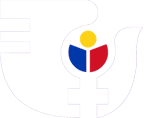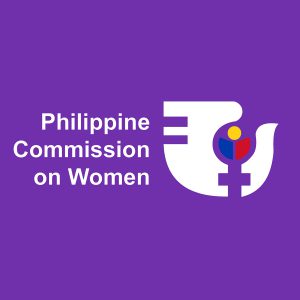Agriculture, Fisheries and Forestry Sector

Why prioritize this sector?
Although rural women greatly contribute and have vital roles in the Agriculture, Fisheries and Forestry (AFF) sector, they are still marginalized in terms of employment, income, land ownership, access to resources, basic services and participation and decision-making.
Employment
According to the data of the Philippine Statistics Authority (PSA), from 2007 to 2016, women comprise about 25% of workers in the agricultural sector. However, official data may not accurately capture women’s work in agriculture as it is normally considered to be extensions of their household tasks and therefore not reported as “work.” For this reason, despite recognition in policies, women continue to be unaccounted to agriculture work when in fact, they continue to participate in unpaid family work in agriculture in larger numbers as compared to men.
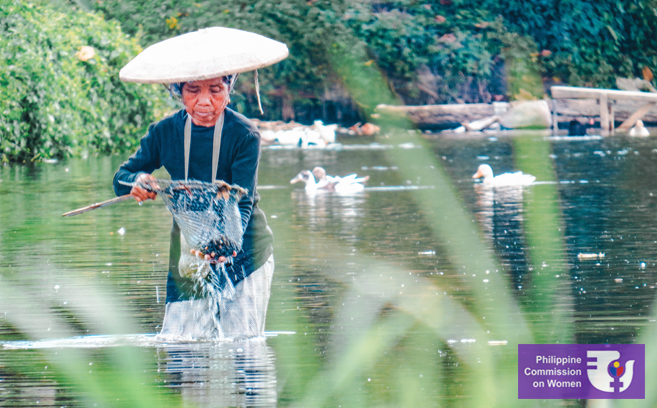
Wage
Nominal and real wage rates of women in the agriculture sector are considerable lower than men. The 2015 data show that the daily nominal wage rate of men is higher by 21 pesos compared to women while the difference in terms of real wage rates is 15 pesos (PSA, 2016).

Land Ownership
From 2000 to 2015, the cumulative total of agrarian reform beneficiaries (ARBs), which had been awarded emancipation titles, was 415,741, of which only 13.8% are women (PSA 2016). In 2015, the percent share of women was 35%–the highest percentage share of women ARBs of emancipated patents since 2000. In the same period, only 32% of ARBs with Certificate of Land Ownership Agreements are women.
The membership in agrarian reform cooperatives is almost equal between men and women as stated in the 2016 data. However, among the 371,409 total ARB members, 38% are women while 62% are men, reflecting the fact that majority of ARBs are men (DAR 2016).
Women’s Economic Productivity During the Pandemic
The Covid-19 changed the world of work. It increased the challenges for people residing in rural areas and exposed the vulnerable rural population to hunger and poverty. Among the hardest hit were the small-scale farmers, fishers, foresters, and micro-enterprise owners relying on people’s economic activity.1 Women, on the other hand, were brutally hit too. They are particularly vulnerable to secondary impacts such as economic activities, production, and productivity. Women farmers, fishers, foresters, and women-headed households often have low to no access to inputs, information, and financial liquidity, affecting productive capacity and, thus, food security. Further, basic formal social protection is limited in the informal and low-paying sectors like agriculture, fisheries, and forestry (AFF), where women-owned farms, fish pens, and micro-enterprises are concentrated, making them at risk of economic distress.
The initial response to Covid-19 was to preserve people’s lives. However, efforts to contain the virus resulted in decreased economic activity. The cycle of poverty susceptibility began. Due to border closures and travel restrictions, access to jobs, livelihood, and market was restrained. Decreased food demand pushed prices of agricultural commodities downward, adversely affecting the economic opportunities and activities of women farmers, foresters, fisherfolks, and micro-enterprises in the AFF. AFF’s productivity and production have been interrupted. Transport disruptions for production inputs, raw materials for processing, and finished products for domestic consumption were severed by lockdown measures. Small farmers, fishers, and foresters could not sell their harvest or were forced to sell at a lower price, resulting in business losses. Despite the economic downturn, AFF remains firm.
Response measures and recovery plans should consider the resiliency of the rural population to escape poverty while remaining in rural areas. Their needs and concerns should be considered when designing vertical and horizontal measures. A significant consideration is a social context embracing innovation and opportunities to share knowledge, financing, and technical assistance. Another frame to consider is the differential needs of male- and female-headed households. Designs and implementation of plans should consider the opportunities and challenges posed by gender norms, roles, and power relations in society. Responses and recovery plans for the pandemic can drive the resolution of the persistent issues of gender inequality/inequity through the reduction of vulnerabilities, inclusive innovation, collection, analysis, and use of sex-disaggregated data (SDD), and gender-responsive economic measures. The circumstances are still fluid, and the future remains unclear.
WOMEN AND AFF UNDER STRESS
Women by the numbers
At the onset of the pandemic, one of the major challenges faced by the national government (NG), local government units (LGUs), non-government funding organizations, and civil society organizations (CSOs) was the identification of the target populations. SDD and gender-related information about the AFF population are limited. Worse, the data collected are not harmonized.
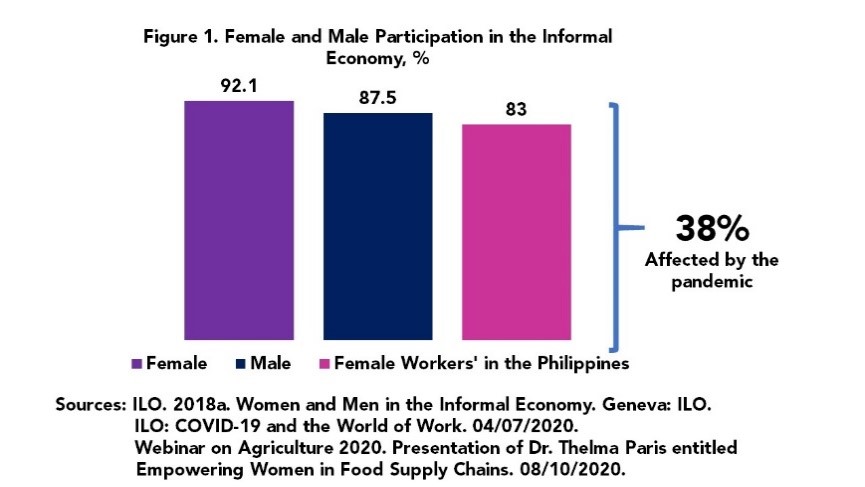
Although there is a higher case and death rate among men than women,2 secondary effects of the pandemic affect poor women, especially in rural areas where agriculture is the primary economic sector. Women are potentially over-exposed in the economic fallout brought about by the pandemic as they comprise the majority of those in the informal economy (Figure 1) – low paying (Figure 2), tied to daily/hour payment scheme, seasonal nature of work, and not covered by social protection – characteristics of the AFF sub-sector.
Women working in these occupations are more economically vulnerable as the pandemic decreased working hours by 9.3%3 but increased their multiple burdens. This situation becomes the major psycho-social challenge to women’s economic productivity in the AFF during the pandemic. UN Women estimated that Filipino women increased their time allocation for adding at least three activities related to unpaid care work (19%) and unpaid domestic work (40%) during the pandemic. This data is 3% and 8% higher than their male counterparts. Longer hours devoted to unpaid care and domestic works lessen the rural women’s time to participate in alternative productive activities for their economic development.
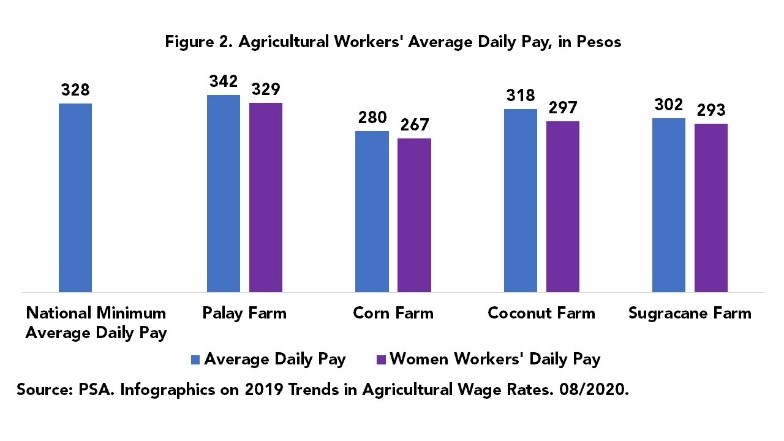
Among the three economic sectors, only the agriculture sector increased the employment rate during the pandemic (Figure 3) partly due to macro-socioeconomic responses such as Balik Probinsya Program. However, this program may increase the low-wage job competitors exposing rural women to the risk of being displaced. There is no difference in the unemployment rate between sexes, but it is noted that there is a massive difference in the labor force participation rate.4 In the agriculture and food value chain, women’s role before the pandemic is slightly visible in the production and post-production but highly visible in the food processing/value-adding and marketing. However, female labor force participation increases with poverty and unfavorable conditions like pandemics.5
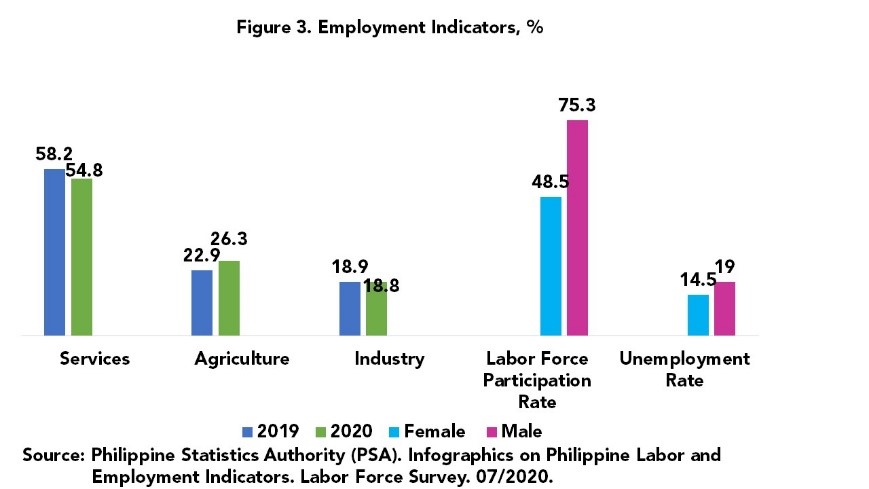
The mixed-gender gap is noted regarding financial inclusion and social protection measures (Figure 4). Though women are earning less, more women are saving,6 owning an account, saving through e-money, and availing insurance than males. However, men are more likely to save in institutional entities (e.g., banks) and invest.7 Correspondingly, outstanding loans of women in rural areas increased from 7.8% during the pandemic.8 Inopportunely, their loan/credit sources are considered informal (e.g., relatives/friends and microfinance/lending organizations).
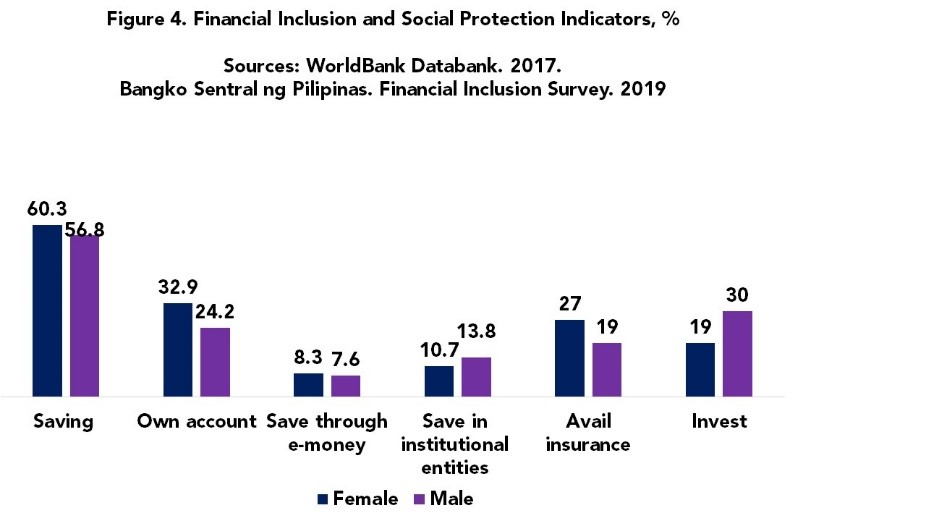
Lastly, the pandemic causes digital platforms to mushroom as these digital tools became the lifeline of the people during the quarantine period. However, cost (e.g., prepaid load, mobile phone), service delivery issues (e.g., fluctuating internet connection), and technical/digital literacy and confidence lower women’s preference on the use of a device; thus, the risk of exclusion.9 The gender digital divide puts women in a disadvantaged position. Globally during the pandemic, women are 8% less likely than men to own a mobile phone – the basic tool for digital transformation – and 20% less likely to use mobile internet.10 This gap means there are 165 million women with no access to information and benefits remotely or online during the pandemic. In developing countries, women also have less autonomy and agency in smartphone acquisition. Rural women are underprivileged even in the internet penetration rate or increased internet use (Figure 5). The gap is worsened by language barriers and illiteracy in rural areas.
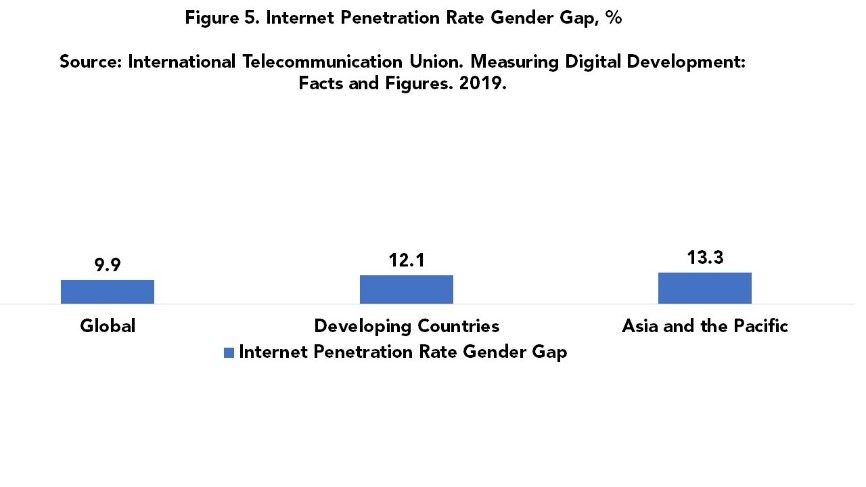
GENDER ISSUES IN THE AFF
Rural areas and the AFF sub-sector have issues to be acknowledged and considered in the responses and recovery plans. Rural areas have a high risk of being deprioritized by the financial institutions and social protection services despite the vital needs and opportunities for finances and protection. Rural areas have a better condition (4% and 3% respectively) than urban areas in terms of insurance and savings. Still, there is a vast disparity (18%) in the investment opportunities.
Further, the AFF sub-sector experienced varying situations. Second to mining and quarrying, it gained employment by 19.1%. However, the fishery sub-sector ranked number four in those sectors with the most significant drop in employment. It posted a 21.2% drop in employment or equivalent to an estimated 300,000 fishers and fish farmers quitting from production and working. All of these circumstances posed higher vulnerability to women.
Multiple Economic Vulnerabilities. Workers, middle-class families, and migrants were affected severely. Enterprise closures, either temporary or permanent, left workers with lesser means to buy basic needs. Also, some middle-class families fell into poverty due to the lack of other sources of income. Most, if not all, urban and overseas workers chose to go back home in the rural areas, making the AFF a crowded place for all. The compounded effect is felt especially by rural women who generally earn less, hold irregular employment, live close to poverty, and experience low independence in decision-making. As such, more time, effort, and resources should be allocated for them and their families to recover.
Multiple Burdens. Women with caring responsibilities are under particular pressure. Women disproportionately shoulder unpaid work caring for the children, the elderly, and the sick. Urged to share the family’s income, they need to do productive and care work, making their days longer, rest shorter, and stress higher. School closures added to the burden for women expected to guide and monitor their children’s school performance. Coupled with lower nutritious food and vitamin intake to save money, women became an easy target of the infection and low productive capacity to compete in the crowding AFF.
Multiple Unmet Strategic Needs. Farmers, fishers, foresters, and micro-enterprise owners, especially women, have several environmental factors to deal with.
The following challenges in the AFF sub-sector left the AFF value chain actors, especially women who budget household income, to think of how to keep the supply flowing:
- high production cost
- low farm-gate prices
- diseases
- persistent household debt
- natural risks
- movement restrictions
- shifts in consumer
Capital is the primary need of the small-scale farmers, fishers, foresters, and micro-enterprise owners, primarily women-headed/owned. Some stopped investing in their operations due to the lack of household income. Limited income sources and low productive assets put them into a situation where they need to prioritize because inputs compete with their basic needs, especially food. Being self-financing caused closure and stopped farming during the pandemic.
Enterprises in the AFF are pressured by the situation and the whole context of AFF to excel with limited resources at hand. In a study conducted by the Philippine Commission on Women’s (PCW) Great Women Project II (GWP2), women-owned enterprises faced the following challenges:
- increased price or no access to raw materials
- changed terms and conditions of the suppliers
- hoarding
- limitations to actual production
- physical store shutdown
- limited market schedule
- low sales collection
- crowding online market
- small markup when partnering with institutionalized delivery service providers.11
Digitalization also posed a challenge. AFF workers who rely online are confined to a lower price of products/commodities due to their inability to properly price their products on online platforms.
Reaching the beneficiaries is also challenging. Physical infrastructures like farm-to-market/coast-to-market roads and digital infrastructures are partial/nonexistent in rural areas.
Reduced production capacity and limited market access negatively impact all AFF value chain actors’ cash flow and financial liquidity, significantly affecting women-headed households.
Multiple Social Barriers. The right mix of policies and programs depends on the existing social barriers. Economic impacts brought about by the pandemic aggravated by the current social inequities. Financial institutions rely on ownership of resources (e.g., land) and the ability to pay, which small-scale farmers, fishers, foresters, and enterprise owners cannot show any proof. Women, due to discriminatory gender norms, are more disadvantaged.
References/Cited Sources:
1 International Labour Organization. ILO Monitor: COVID-19 and the World of Work. Second Edition. Updated Estimates and Analysis. 04/07/20.
2 Global Health 50/50. 09/18/2020.
3 UN Women. Rapid Assessment Surveys on the Consequences of COVID-19 in Asia and the Pacific. 2020.
4 Philippine Statistics Authority (PSA). Infographics on Philippine Labor and Employment Indicators. Labor Force Survey. 07/2020.
5 Webinar on Agriculture 2020. Presentation of Dr. Thelma Paris entitled Empowering Women in Food Supply Chains. 08/10/2020.
6 WorldBank Databank. 2017.
7 Bangko Sentral ng Pilipinas. Financial Inclusion Survey. 2019.
8 Department of Agriculture’s Report to the Convention to the Elimination of all Forms of Discrimination Against Women. 2020.
9 Internet Society. Issue Paper: Asia-Pacific Bureau (Gender). 05/2017.
10 Global System for Mobile Communications Association. Connected Women: The Mobile Gender Gap Report 2020. 03/2020.
11 Philippine Commission on Women-Women Economic Empowerment GREAT Women II Project. Study on the Immediate Effects of COVID-19 on WMEs. 2020.
